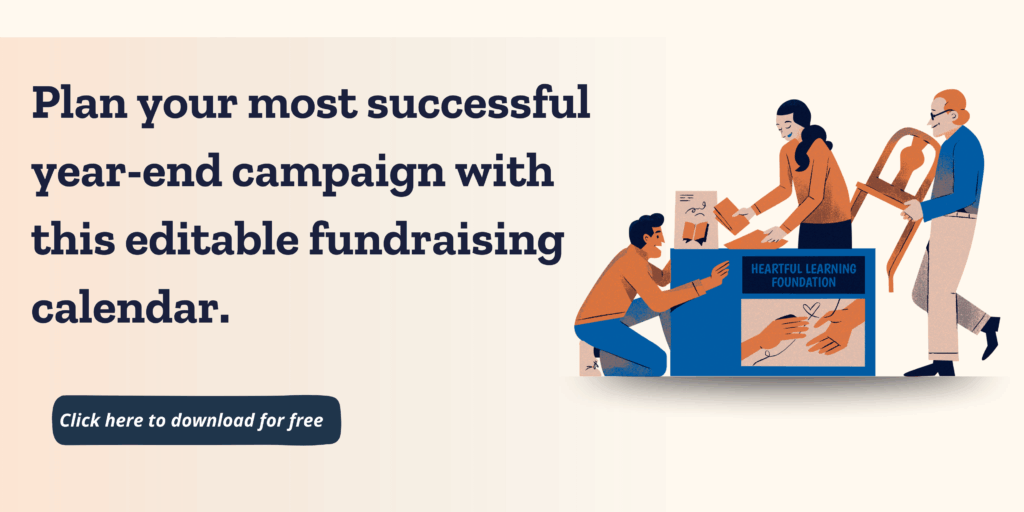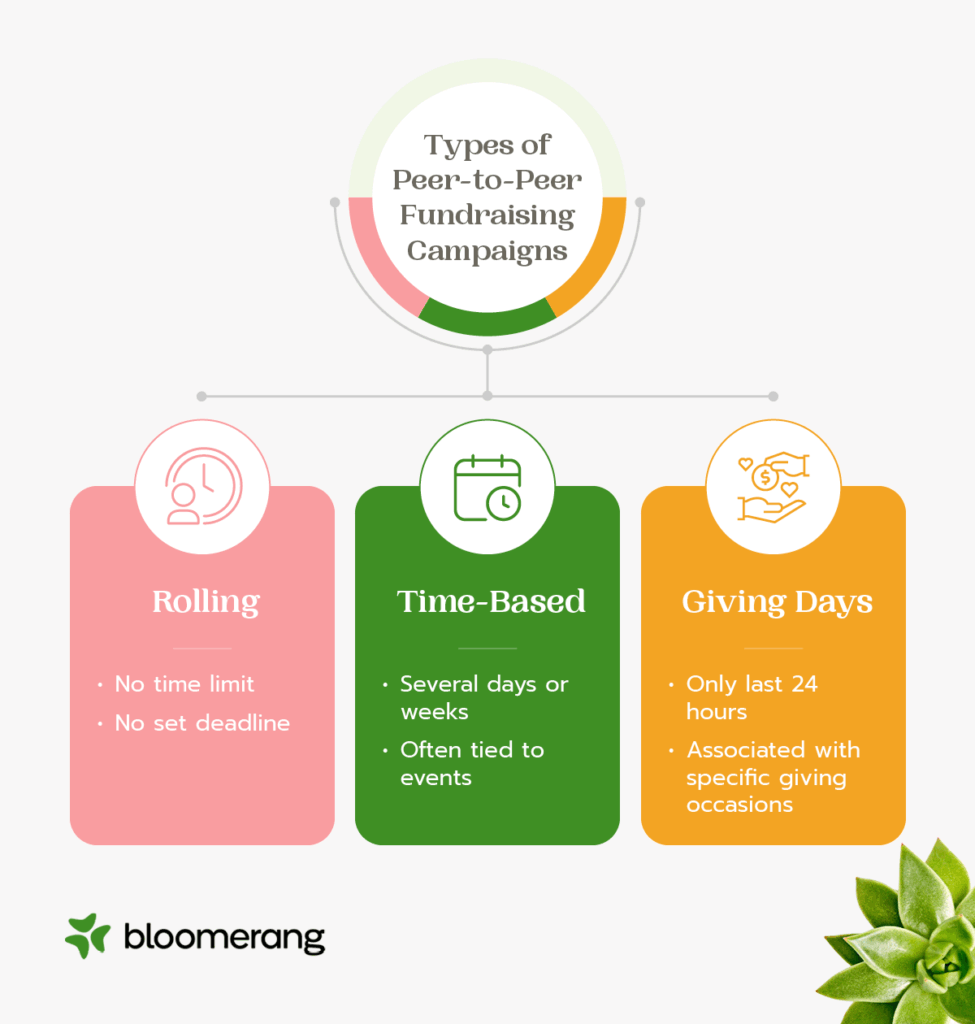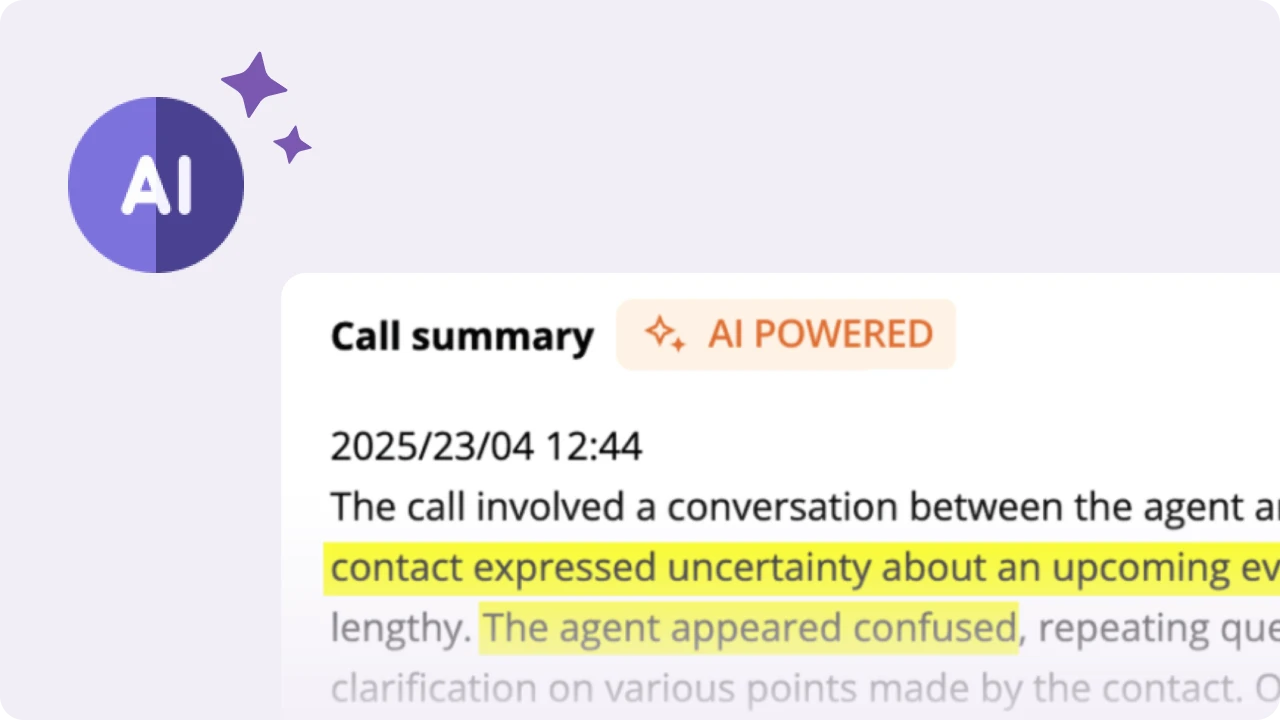Table of Contents
Feeling stuck in a fundraising rut? A smarter fundraising strategy could be the breakthrough you need!
While grants and government funding are important, the area where you have the most control and the greatest opportunity is individual giving. How you engage individual donors can shape your nonprofit’s growth and sustainability, so your fundraising plan should reflect that.
To help you raise more money and strengthen these relationships, your fundraising plan needs to do three things well: expand your donor base, retain existing supporters, and generate scalable revenue. This guide will walk through essential steps to develop a sound fundraising strategy that helps you reach the right people with the right messages to make a bigger impact.
1. Define your goals.
The first step in developing a fundraising strategy is to set goals. Without goals, you’re flying blind with no benchmarks to track progress or guide next steps.
Your fundraising goals should reflect your broader nonprofit strategic planning efforts. For example, let’s say you’re planning to launch a new program. You’ll need a fundraising target that supports that initiative.
When setting goals, use specific, finite phrases. For example, let’s say you set a goal to “Raise more donations next year.” There’s no real finality to the idea of “more donations.” You could raise one more donation from the previous year or see an increase of $10,000 over the previous year’s revenue. Either way, you will still have achieved your goal.
Instead, make your goals specific and measurable, so you know when you reach and exceed them. For example, you might say:
“Raise $50,000 more in individual donations by year-end than we did last year.”
This goal is concrete, time-based, and easy to evaluate. Goals like these give your team clarity and motivation, help you track success, make smarter decisions, and drive your fundraising strategy forward.

2. Determine your audience.
Too often, nonprofits approach fundraising as though they’re pulling money from an ATM, forgetting there are real people on the other side. Understanding who supports your mission (and why!) is essential to building a strong fundraising strategy.
Define donor personas.
Start by identifying the types of people who give to your nonprofit. Create general profiles based on patterns in your supporter base. These are your donor personas. For example, one persona might be:
Retired men in Vermont who are interested in supporting your educational initiatives for the next generation.
Not every Vermont resident or person who supports your educational initiatives will fit this profile. However, personas will help you generalize and understand the motivations for key audience groups.
When building personas, consider demographic and psychographic traits like:
- Age
- Gender
- Location
- Profession
- Interests
- Motivations
These insights guide messaging, campaign selection, and the tone of your outreach.
Segment your supporter base.
After developing your personas, apply them to your donor database to create actionable segments. Your segments might include:
- First-time donors
- Major supporters
- Mid-tier supporters
- Volunteers who have not yet donated
- Volunteers who have donated
- Lapsed supporters
- LYBUNTs (people who gave last year but unfortunately not this year)
- SYBUNTs (people who gave some year but unfortunately not this year)
Audience segmentation is invaluable when selecting campaign strategies and tailoring your case for support to different groups. For example, a message to college-student volunteers should sound different from one aimed at middle-aged mid-tier donors.
3. Choose your campaigns.
Fundraising ideas aren’t one-size-fits-all. The most effective campaigns are created with your unique audience in mind. To truly engage your supporters, choose initiatives that align with their interests and giving habits.
Below are some compelling campaign ideas. Consider how each might resonate with your supporter segments. You can adapt some of these ideas to both online formats and in-person events, depending on what your audience will find most appealing.
Fundraising auctions
Auctions are a classic addition to in-person galas, especially when you’re running a silent auction where guests can browse items and place bids at their own pace. This format adds energy to the event without interrupting the program.
However, you can conduct auctions more frequently and less formally when you have an online platform to collect bids. Either way, curate items, experiences, and services that fit different budgets, so all your donors can participate.
Pro Tip: Request in-kind donations from your supporters and local businesses to keep costs low.
Peer-to-peer fundraising
Peer-to-peer fundraising turns your supporters into advocates for your mission. They set up donation pages and ask friends and family to give to your organization. These campaigns often lead up to events, but you can also leverage them as independent initiatives.
Bloomerang’s peer-to-peer fundraising guide highlights three types of campaigns:

- Rolling campaigns allow supporters to fundraise year-round without a deadline, giving them flexibility to start anytime.
- Time-based campaigns run for several days or weeks and are often tied to events like walk-a-thons, creating structure and momentum around a specific fundraising goal.
- Giving days are high-energy, 24-hour campaigns that create urgency. They’re often aligned with dates like GivingTuesday or mission-specific awareness days.
Pro Tip: Make it easy to participate with plug-and-play templates and sample messaging that participants can use.
Run/Walk Event
5Ks and walk-a-thons are classic examples of fundraising events that your entire community can participate in.
For in-person events, map out a local route, provide signage and water stations, and create a festive post-race celebration with music. These extras make the event feel special. For virtual runs and walks, let participants complete the race on their own time and track progress with an approved app or fitness watch.
Pro Tip: Create a race kit with a t-shirt, bib, and instructions that can be mailed or picked up. This keeps participants excited wherever they’re joining from!
eCommerce
Selling branded merchandise like t-shirts, hats, or mugs raises funds and builds awareness. An online store allows supporters to shop anytime, while a merch table at in-person events drives impulse purchases and adds a professional touch to your setup.
Pro Tip: Use print-on-demand services to reduce overhead, so you won’t pay for unsold inventory. You can also align merchandise with individual campaigns or events to create higher demand.
4. Write a case for support.
While campaigns like 5Ks and merchandise sales bring in smaller gifts, most fundraising revenue will come from major donations and larger campaigns like capital or capacity-building campaigns.
To secure those high-impact gifts, you need a strong case for support: a compelling message that explains why your campaign matters and why donors should give.
Crafting a case for support can be more challenging for new nonprofits. Define your mission and clearly communicate your desired impact to establish credibility.
What to include in your case for support
In this important document, include the following elements:
- The Campaign Title: Choose a name that reflects your campaign’s purpose.
- The Challenge: Explain the core issue your campaign seeks to solve.
- Your Solution: Describe the programs or activities the campaign will fund to solve the problem.
- Your Unique Value Proposition: Highlight what sets your organization apart from similar ones and why you’re the best nonprofit for the job.
- Your Campaign’s Urgency: Explain why giving to this campaign is crucial today.
- A Fundraising Goal: Share the total amount necessary to fund the solution and how you’ll use contributions.
- How Donors Can Help: Provide actions donors can take to help you achieve your goals (e.g., donate, share the campaign on social media, etc.).
Writing your case for support early gives you clarity and confidence when speaking to potential donors. It helps you explain your goals and secure the contributions needed to fund your strategy.
5. Develop a marketing plan.
Whether you’re reaching out to major donors or everyday supporters, you need a clear marketing plan. A solid plan helps you:
- Attract attention to your campaigns
- Build trust with your audience
- Drive more consistent donations over time
- Ensure your messaging is timely, targeted, and relevant, rather than reactive or scattered
- Have a roadmap for when and how to engage supporters
- Track performance and adjust your strategy based on results
Your nonprofit should create a dedicated plan for each campaign. Define your goals, choose outreach channels, and craft messaging for each donor segment. For example, for a 5K fundraiser, you might use email, Facebook, text messages, and your nonprofit’s website. Then, adjust your message for different groups, like younger volunteers and long-time donors.
6. Steward your supporters.
Raising money is only part of the fundraising equation. The other half is encouraging supporters to give again in the future. Robust stewardship boosts your donor retention rate and helps you raise more money over time. After all, as philanthropic expert and academic Adrian Sargeant claims,
“It typically costs around five times as much to solicit a new customer as it does to do business with an existing one.”
That means you’ll save money by retaining your supporters while also boosting revenue since you won’t constantly need to replace lost donors.
Qgiv’s guide to fundraising software explains that your technology can be instrumental in stewarding relationships. Your fundraising tools will help you track donor behavior to personalize communications and find opportunities that fit each donor’s specific needs and interests.
With these insights in mind, make meaningful gestures to strengthen relationships, such as:
- Calling donors to thank them for their latest contribution
- Sending thank you emails and letters
- Offering branded gifts like t-shirts, stickers, and mugs
- Giving tours of your facilities and work sites
- Sending your most recent newsletters to supporters
- Asking for feedback through surveys
Get a jump-start on developing your stewardship plan when developing your fundraising strategy. This way, you can show your appreciation for donations in a timely manner and begin building long-lasting relationships sooner.
Start putting your fundraising strategy together.
Your mission wouldn’t be possible without fundraising. With a clear strategy in place, you can run more successful campaigns that draw supporters in.
Instead of rushing to launch your next campaign, take a step back. Use what you’ve learned to refine your process and brainstorm new ideas with your team. Document your plan, assign responsibilities, and set timelines.
Most importantly, stay flexible and focused. A thoughtful fundraising strategy does more than bring in donations. It builds lasting relationships and long-term impact. Keep your supporters at the heart of everything you do, and positive results will follow!

Author: Ann Fellman
Chief Marketing Officer at Bloomerang
As Chief Marketing Officer at Bloomerang, Ann Fellman champions the company’s mission to empower For-Purpose organizations through innovative fundraising technology. With over 25 years in technology marketing, including spearheading memberships at the Minnesota High Tech Association and being recognized as one of the “Top Women Leaders in SaaS of 2018,” Ann’s expertise lies in connecting nonprofits with the essential fundraising software they need to grow a robust nonprofit culture and achieve next-level impact. Her strategic thought leadership ensures Bloomerang’s Giving Platform remains at the forefront, helping nonprofits raise more, build culture, and retain supporters for sustained growth.


